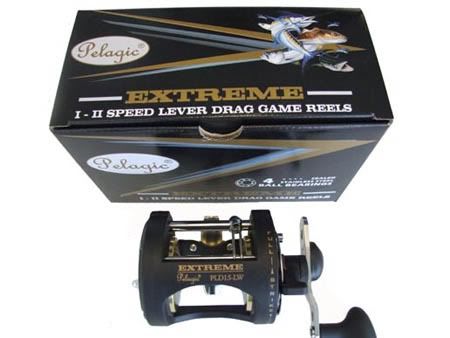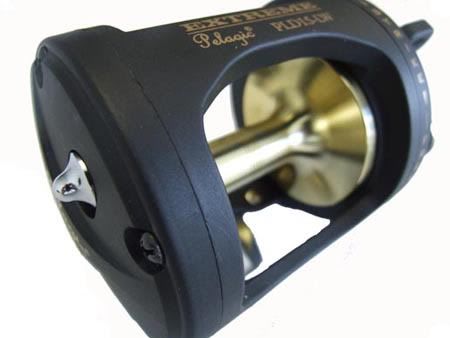Fishing reels are sometimes taken for granted and not many people take time to think about the Intricacies of fishing reel parts. They are the device that brings the fish in, and modern fishing reels are fairly complicated devices. The spinning reel is the most popular version used in fishing today, but it is not always the best choice for many types of fishing. You should never guess as to which reel will be the right choice for you while browsing the aisles are a fishing supply store. Understanding how a fishing reel works can help you determine which are the best options for your needs. Spinning reels and baitcast reels are different, and in either case, it is a good idea to chose the reel with the fewest parts and they have the lower chance of mechanical failure.
Reel bodies can be made of plastic, aluminum, steel, or graphic.
Aluminum is tougher than graphite, but graphite is much lighter. It is a personal call whether the lower weight of graphite is worth it trade off in toughness, but it primarily depends on the type of fishing you do. Larger fish will require aluminum, while catching smaller fish allows you to get away with graphite and have less weight to deal with. Graphite is also great at resisting saltwater corrosion. When looking at a reel to buy you should be sure it feels solid and has no loose and rattling parts. There movement should be smooth and there should be no back play.
The reel size is important as well. Lighter lines call for smaller reels, and vise versa. In most cases ten pound test line is as tough as you need, so your reel should not exceed the diameter needed by ten pound test line. However, if you are into serious saltwater fishing you may need a bigger reel and line.
One of the most important fishing reel parts are the gears as these are what connect the crank to the spool. The ratio of the gears determines how many revolutions the spool makes when one revolution of the crank is made. And example would be a ratio or 4:1. This means that turning the crank once makes the spool turn four times. Having a lower ratio, such as 3:1 is advantageous for reeling in bigger fish as it provides more torque. The downside is that the process will be slower. For smaller fish a higher ratio can be used since less torque is needed. The upside is that you can reel the fish in faster.
Drag systems are what apply the pull on a hooked fish, but let the line out when the fish is fighting. This helps absorb the energy of the fish and prevent a broken line or dropped reel. The ball bearings in the reel help keep the action smooth, which aids in a very confident and consistent reeling motion.
Your fishing reel parts when assembled together are the mechanical components that helps you actually bring the fish in. If the reel is not up to the task, you will not catch the fish even though it took the bait. Do not skimp on your reel, but also do not buy a reel that in excessive to your needs as an oversized reel will make catching smaller fish more difficult.
Reel bodies can be made of plastic, aluminum, steel, or graphic.
Aluminum is tougher than graphite, but graphite is much lighter. It is a personal call whether the lower weight of graphite is worth it trade off in toughness, but it primarily depends on the type of fishing you do. Larger fish will require aluminum, while catching smaller fish allows you to get away with graphite and have less weight to deal with. Graphite is also great at resisting saltwater corrosion. When looking at a reel to buy you should be sure it feels solid and has no loose and rattling parts. There movement should be smooth and there should be no back play.
The reel size is important as well. Lighter lines call for smaller reels, and vise versa. In most cases ten pound test line is as tough as you need, so your reel should not exceed the diameter needed by ten pound test line. However, if you are into serious saltwater fishing you may need a bigger reel and line.
One of the most important fishing reel parts are the gears as these are what connect the crank to the spool. The ratio of the gears determines how many revolutions the spool makes when one revolution of the crank is made. And example would be a ratio or 4:1. This means that turning the crank once makes the spool turn four times. Having a lower ratio, such as 3:1 is advantageous for reeling in bigger fish as it provides more torque. The downside is that the process will be slower. For smaller fish a higher ratio can be used since less torque is needed. The upside is that you can reel the fish in faster.
Drag systems are what apply the pull on a hooked fish, but let the line out when the fish is fighting. This helps absorb the energy of the fish and prevent a broken line or dropped reel. The ball bearings in the reel help keep the action smooth, which aids in a very confident and consistent reeling motion.
Your fishing reel parts when assembled together are the mechanical components that helps you actually bring the fish in. If the reel is not up to the task, you will not catch the fish even though it took the bait. Do not skimp on your reel, but also do not buy a reel that in excessive to your needs as an oversized reel will make catching smaller fish more difficult.
Learn more about finding the right fishing gear by visiting http://www.fishinggeartips.com - a website that offers information on fishing including tips on fishing line, fishing rods, fishing lures and fishing reels [http://www.fishinggeartips.com/fishingreel.php].
Article Source: http://EzineArticles.com/?expert=Lee_Dobbins
See my previous post: Spinning Reel Tips







{ 0 comments... read them below or add one }
Post a Comment